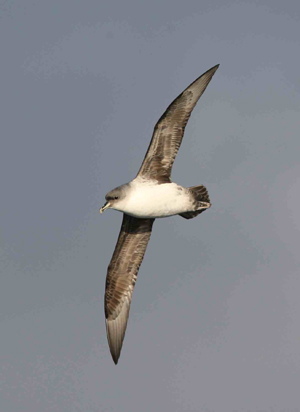The Scientific Committee of the Commission for the Conservation of Antarctic Marine Living Resources (CCAMLR) meets annually in Hobart, Australia in October/November of each year. At two-year intervals of late the Working Group on Incidental Mortality Associated with Fishing (WG-IMAF) has met immediately before the Scientific Committee.
WG-IMAF was established by CCAMLR in 1992 in response to the large numbers of albatrosses and petrels then being killed by longliners in the Southern Ocean. Since then its activities and recommendations for the adoption of seabird conservation measures have progressively led to drops in the numbers of birds killed, so that now CCAMLR-managed fisheries are an exemplar to other high seas fishery management organizations. It has also extended its purview to address seabird mortality from trawling.
The report of the 2009 meeting of WG-IMAF is available at http://www.ccamlr.org/pu/e/e_pubs/sr/09/a07.pdf. The report estimates that a total of 521 birds was killed by legal fisheries within the CCAMR region over 2008/09, mostly within the Exclusive Economic Zones (EEZs) around the French sub-Antarctic islands in the southern Indian Ocean. Over 90% of this estimate was of ACAP-listed White-chinned Petrels Procellaria aequinoctialis.
This year WG-IMAF met under the Convenorship of J. Moir Clark (UK) over 10-12 October. ACAP was represented by invitation by Barry Baker, Convenor of its Seabird Bycatch Working Group and Technical Advisor to the ACAP Secretariat.
All birds reported killed by Southern Ocean longlining over 2010/11 were from the French EEZs, but the adoption and enforcement of mitigation measures by French vessels has continued to see a decrease in the estimates of birds killed throughout the Southern Ocean to 220, once again mostly (82%) White-chinned Petrels, along with 12% Grey Petrels P. cinerea, 4% Northern Giant Petrels Macronectes halli) and 2% Southern Rockhopper Penguins Eudyptes chrysocome. This is less than half the estimate of two seasons before.

Grey Petrel at sea: at risk to longlines
Photograph by Peter Ryan
Four seabird mortalities (all Cape or Pintado Petrels Daption capense) were reported due to interactions with Antarctic Krill Euphausia superba trawl gear and no bird mortalities were reported from finfish trawl fisheries.
The future of IMAF is to be decided by the Scientific Committee and Commission, but meeting at less regular intervals has been suggested, for as long as it is considered that its activities can lead to further reductions in the mortality of seabirds associated with fishing activities in the Southern Ocean.
John Cooper, ACAP Information Officer, 2 November 2011

 English
English  Français
Français  Español
Español